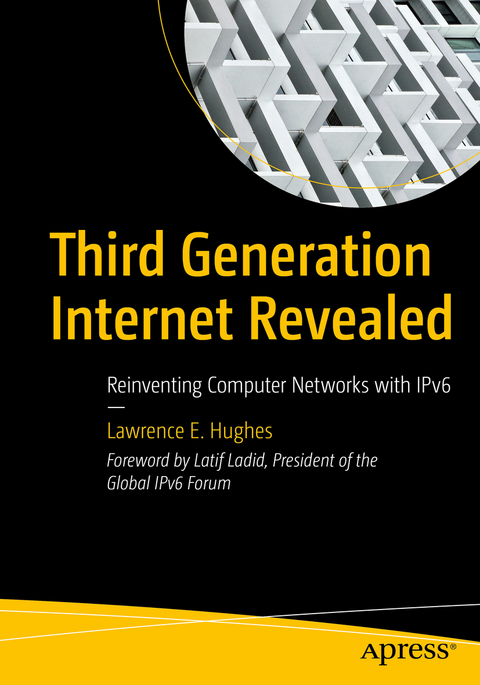
Third Generation Internet Revealed
Apress (Verlag)
978-1-4842-8602-9 (ISBN)
IPv6, a mature and viable replacement for IPv4, is currently used by more than 36% of all global Internet traffic. Wireless telephone service providers in many countries have migrated their networks to IPv6 with great success. The elimination of NAT and Private Addresses has vastly simplified network design and implementation. Further, there are now enough public addresses allocated to accommodate all anticipated uses for the foreseeable future.
Most networking products and software, especially open-source software, are already fully IPv6 compliant. Today, no businessshould purchase obsolete products that support only IPv4. The global IPv6 Forum estimates that there are millions of networking professionals still needing to learn the fundamentals of IPv6 technologies to move forward. This book is for them. With plans in place for a shutdown of IPv4 on global networks (“Sunset IPv4”) the time to learn is now. If you want a job in IT, especially network hardware or software, and you don’t know IPv6, you are already obsolete.
What You Will Learn
This book serves as a guide to all relevant Internet Engineering Task Force (IETF) standards Request for Comments (RFCs), organized by topic and discussed in plain language
Understand how IPv6 makes viable technologies such as multicast (for efficient global audio/video streaming), IPsec VPNs (for better security), and simpler VoIP
Take “edge computing” to the limit by eliminating intermediary servers made necessary by IPv4 NAT–for example, making connections directly from my node to yours
Discover how organizations can introduce IPv6 into existing IPv4 networks (“Dual Stack”), and then eliminate the legacy IPv4 aspects going forward (“Pure IPv6”) for the mandates going into place now (for example, US DoD requirements to move all networks to Pure IPv6)
Recognize that 5G networking (the Grand Convergence of conventional networks and wireless service) depends heavily on the advanced features IPv6
Who This Book Is For
Networking professionals. Readers should have at least some familiarity with the precursor protocol (IPv4) and legacy TCP/IP based networks. Some knowledge of network models, such as DoD four-layer model or OSI 7-layer model, is helpful to understand where the Internet Protocol fits into the larger picture. For network software developers using the Sockets API (in UNIX, Windows, etc.), this book will help you to understand the extensions to that API needed to work with IPv6.
Lawrence E. Hughes is a renowned expert in IPv6 and PKI. He has spoken at numerous IPv6 Summits worldwide. He created and ran one of the IPv6 Ready product certification centers for many years. He is an IPv6 Forum Gold Certified Trainer and was inducted into the IPv6 Hall of Fame in 2019. He co-founded Sixscape Communications in Singapore where he built their dual stack networks and was responsible for creating much of their technology. He is a security author and most recently published Pro Active Directory Certificate Services with Apress.
Chapter 1: Introduction.- Chapter 2: History of Computer Networks up to IPv4.- Chapter 3: Review of IPv4.- Chapter 4: The Depletion of the IPv4 Address Space.- Chapter 5: IPv6 Deployment Progress.- Chapter 6: IPv6 Core Protocols.- Chapter 7: IPSec and IKEv2.- Chapter 8: Transition Mechanisms.- Chapter 9: IPv6 on Mobile Devices.- Chapter 10: DNS.- Chapter 11: The Future of Messaging with No NAT.- Chapter 12: IPv6 Related Organizations.- Chapter 13: IPv6 Projects.
| Erscheinungsdatum | 03.11.2022 |
|---|---|
| Zusatzinfo | 72 Illustrations, black and white; XXV, 411 p. 72 illus. |
| Verlagsort | Berkley |
| Sprache | englisch |
| Maße | 178 x 254 mm |
| Themenwelt | Mathematik / Informatik ► Informatik ► Netzwerke |
| Technik ► Elektrotechnik / Energietechnik | |
| Technik ► Nachrichtentechnik | |
| ISBN-10 | 1-4842-8602-2 / 1484286022 |
| ISBN-13 | 978-1-4842-8602-9 / 9781484286029 |
| Zustand | Neuware |
| Informationen gemäß Produktsicherheitsverordnung (GPSR) | |
| Haben Sie eine Frage zum Produkt? |
aus dem Bereich


